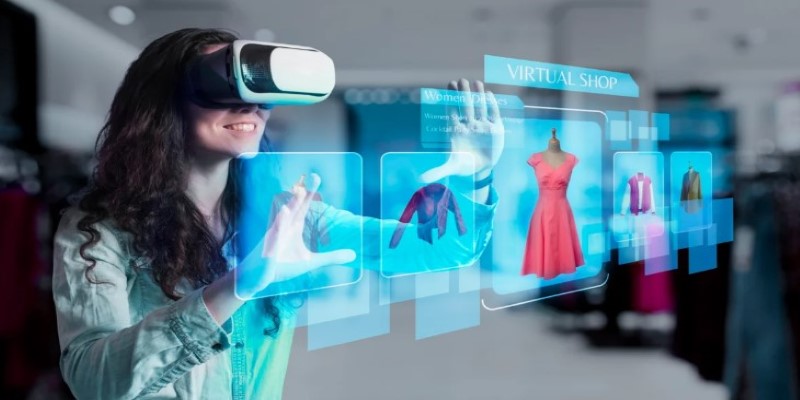- Electronics & Tech News
Augmented Reality: The Next Big Shift In Entertainment And Retail
As 2025 approaches, augmented reality (AR) will continue to reshape how we interact with the world around us. This technology superimposes digital information onto our physical environment, enhancing our experiences in both entertainment and retail. While AR has been around for a while, recent advancements are pushing it to the forefront of consumer experiences, making it a pivotal aspect of how we shop, play, and engage with brands. In this article, we'll delve into how AR is transforming these industries, its potential future developments, and what it means for consumers and businesses alike.
Understanding Augmented Reality
To appreciate the impact of augmented reality, it's essential to understand what it is. AR combines real-world elements with digital overlays to create an interactive experience. Unlike virtual reality, which immerses users in a completely digital world, AR enhances our existing surroundings with information, images, and animations. Popular applications of AR include mobile apps that allow users to visualize furniture in their homes before making a purchase or games that integrate real-world locations into their gameplay.

As technology has advanced, AR devices have become more accessible. Smartphones and tablets now come equipped with AR capabilities, allowing virtually anyone to experience augmented reality. With the rise of wearable technology, like smart glasses, the potential for AR applications is expanding even further, promising a more immersive and seamless interaction with digital content.
AR In Entertainment: A New Frontier For Engagement
The entertainment industry is one of the most dynamic sectors benefiting from augmented reality. In gaming, AR has revolutionized how players interact with their environments. For instance, games like Pokémon GO have shown how blending digital characters with real-world settings can create engaging experiences that encourage players to explore their communities. This game was just the beginning, with 2025 seeing an influx of similar applications that take advantage of GPS and camera technologies to create location-based games.

Moreover, AR has found its way into film and television. Viewers can now use apps that enhance their watching experience, providing additional context or interactive elements that go beyond traditional storytelling. Imagine watching a movie and using your smartphone to access behind-the-scenes content, character bios, or even alternative storylines. This level of interaction makes the viewing experience more engaging and immersive.
Live events have also embraced augmented reality. Concerts and sports games now frequently use AR to enhance the audience's experience, from interactive visuals that respond to the music to features that allow fans to see player stats in real-time. As technology advances, we can expect even more innovative uses of AR in live entertainment, providing fans with personalized experiences that cater to their interests.
Transforming Retail: A More Engaging Shopping Experience
While entertainment is a significant area for AR, its influence on retail is equally profound. Retailers are increasingly using augmented reality to enhance the shopping experience, making it more interactive and personalized. For instance, many furniture and home decor retailers offer AR apps that allow customers to visualize how a piece of furniture would look in their own home. This not only helps consumers make informed decisions but also reduces the likelihood of returns, benefiting both the buyer and the seller.

Clothing retailers are also leveraging AR to enhance the shopping experience. Virtual fitting rooms have become popular, enabling customers to see how clothes will look on them without trying them on physically. This technology allows for a more convenient shopping experience, especially for online shoppers who often face challenges when it comes to sizing and fit. By incorporating AR, retailers can reduce the uncertainty that often accompanies online shopping.
Furthermore, AR can improve customer engagement within stores. Interactive displays that provide additional product information or virtual experiences can draw customers in and encourage them to spend more time exploring the store. By merging the digital and physical realms, retailers can create a more memorable shopping experience that resonates with today's tech-savvy consumers.
The Role Of Data And Personalization
One of the most exciting aspects of augmented reality is its potential for personalization. As consumers engage with AR applications, they generate data that can be used to tailor experiences to their preferences. Retailers can analyze this data to understand customer behavior, allowing them to offer personalized recommendations and targeted promotions.

In the entertainment industry, data from AR interactions can inform content creation. By understanding how audiences interact with augmented experiences, creators can develop more engaging content that resonates with viewers. This data-driven approach enhances the overall quality of both entertainment and retail experiences, leading to greater satisfaction and loyalty among consumers.
Challenges And Considerations
Despite its potential, the widespread adoption of augmented reality comes with challenges. Privacy concerns are at the forefront, as AR applications often collect significant amounts of personal data. Consumers are increasingly aware of their digital footprints and may hesitate to engage with applications that require access to their cameras or location data. Retailers and developers must address these concerns by being transparent about data collection practices and providing clear benefits to users.

Another challenge is ensuring that AR experiences are accessible to all consumers. While smartphones are widely used, not everyone has access to the latest technology that supports advanced AR applications. Companies need to consider how to create inclusive experiences that cater to a diverse range of users, including those who may not have the latest devices.
Additionally, the effectiveness of AR in both entertainment and retail heavily relies on user experience design. Poorly executed AR experiences can frustrate users, leading to disengagement. Developers and businesses must invest in creating intuitive and seamless interactions to ensure that AR technology enhances rather than detracts from the experience.
Conclusion
Augmented reality is not just a passing trend; it represents a significant shift in how we interact with both entertainment and retail. By blending the digital and physical worlds, AR creates experiences that are more engaging, personalized, and immersive. As technology continues to advance, the possibilities for augmented reality in these industries are limitless. For consumers, this means a future filled with more interactive and satisfying experiences, whether they are shopping for the latest fashion or enjoying a new video game. For businesses, embracing AR technology could be the key to standing out in an increasingly competitive landscape, paving the way for deeper connections with customers and a more innovative approach to engagement.





